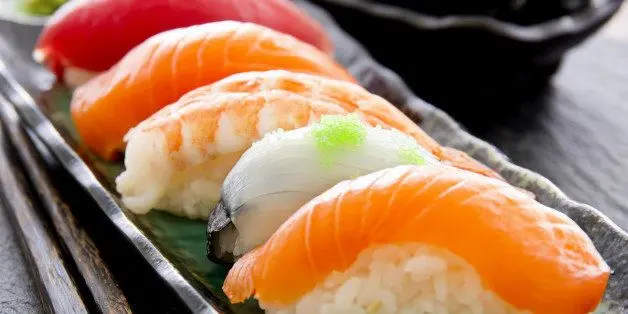The concentration of mercury in tuna meat and sushi made from it varies, and depends primarily on the species of the fish. This discovery allows Japanese food lovers to avoid absorbing too much of the harmful element, reports Biology Letters.
Mercury enters organisms primarily through the respiratory and digestive systems, e.g. through contaminated food. It is especially common in tuna, crabs, snails and wild birds living in areas where fungicides are used. Over time, mercury builds up in tissues, and in high concentrations it can cause great havoc in the body, e.g. damage the nervous system and lead to death.
The association of different mercury concentrations with different species of fish was discovered by experts at the American Museum of Natural History and Rutgers University through genetic studies of sushi samples from 54 restaurants and 15 supermarkets in New York, New Jersey and Colorado. DNA analyzes revealed the species of tuna the meat comes from. The mercury content was later determined. In all species, it was above or close to the limits established in Canada, the EU, Japan, the United States, and the guidelines of the World Health Organization.
Especially mercury was found in sushi akami, made from the lean, dark meat of bluefin tuna, and in all samples of the dish made with Thunnus obesus. On the other hand, less mercury was found in sushi toro, made from the more fatty parts of bluefin tuna – and in the samples of sushi akami, prepared from meat of the Thunnus albacares species.
According to this knowledge, sushi from supermarkets, which mostly use Thunnus albacares meat, may be healthier than sushi ordered in restaurants.
The different mercury content may be related to the fact that this metal accumulates differently in different types of tissue: easier and faster in muscles, less in adipose tissue. That is why the highest concentrations of harmful metal were found in the leanest fish. The scale of its concentration also depends on the size of the fish; the age at which they were caught; on how much the fish themselves eat and their metabolism.
Information on which species are most contaminated could prove useful especially to people who eat fish frequently, comments Robert Wood Johnson Medical School professor Michael Gochfeld.
Until now, American restaurants and traders were not required to know what species they used. Bringing their names to the attention of people, as well as clearer labeling of goods, could allow consumers to better control the amount of mercury they absorb, added one of the study participants, Jacob Lowenstein of the Museum. (PAP)










